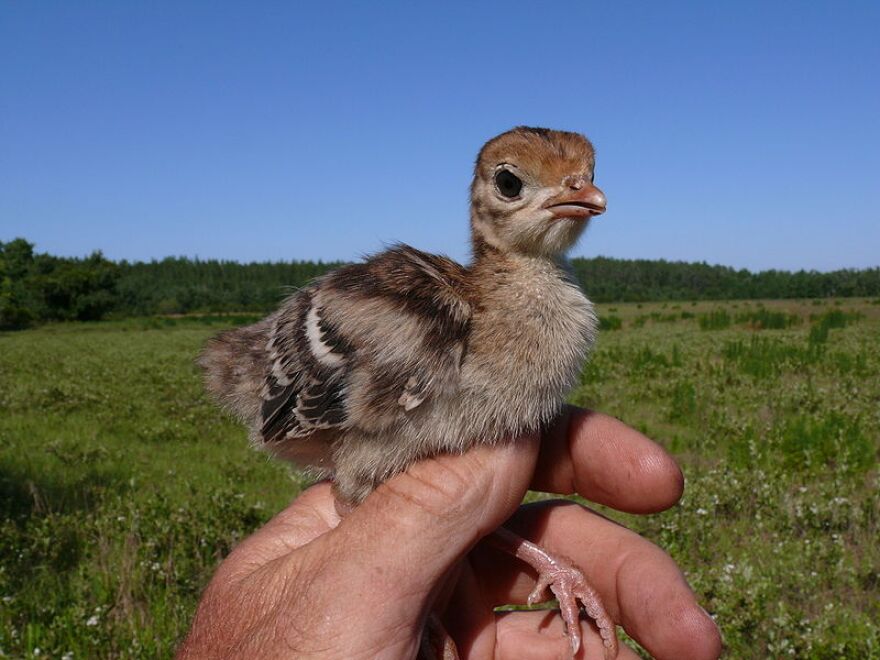We are wrapping up brood observation time at the DNR. Each year since 1970, DNR employees have been writing down all the game bird broods they see in the course of their day-to-day tasks for ten weeks each summer.
This could help explain some erratic behavior you might have seen in the past. If you ever saw a vehicle suddenly pull over and a seemingly normal adult jumped out and chased a bird into the woods, it may have been a DNR employee. We are supposed to get a complete count of numbers of adults and young. We are also supposed to record the approximate age of the chicks, to the nearest week. This is trickier than it sounds, especially at highway speeds. The only way to be certain you saw and counted them all is to follow them in a little ways.
Turkeys are, in my opinion, the easiest to observe. The adults usually stand on the road shoulder while the chicks move through the ditch grass searching for insects. Oftentimes simply pulling over is enough to send the group scrambling for cover. Turkey chicks (or poults) are actually pretty big, which makes them easier to see without getting out of the truck. The only trick to counting turkeys might be accurately recording the number of adults and young. Turkeys exhibit a behavior known as gang brooding. This means that a hen with several young may seek out another hen with several young, and work together to care for all the chicks. This means recording one brood with two or three adults and twenty-five or thirty young is not impossible. So far this year, though, the broods I have been seeing are smaller—not only in numbers of young, but in relative size. There are a lot of young birds out there, which tells me there were a number of turkeys that had to re-nest a second time to hatch out a brood.
In terms of ease of visibility, ruffed grouse are a completely different story. The mother grouse makes every effort to stay concealed and inconspicuous. Very rarely do I see a grouse brood while travelling on a paved road. I have to be on a gravel road in the woods. Usually, my tip-off is seeing grass moving in different directions. I usually can’t stop until I have passed the grouse brood, and I have to double back, wasting precious seconds. Those grouse chicks can really run. Plus, they have this skill of going from a full bore run to squatting down and disappearing instantly. Meanwhile, the mother grouse puts on a big show, pretending she is injured with a broken wing. She squawks and flops and spins around in circles. You can be certain she is moving in the opposite direction of the chicks, trying to lead you away. Don’t worry, mom and chicks are fine. This is all well-rehearsed, and the fact that she still has chicks tells you they have mastered the art of illusion. When the chicks get a little older, like here in July, they can fly, and it gets easier. You walk back toward the spot until the first one flies, and then you stop and wait. If you are lucky, they will pop out of the grass one by one, like popcorn kernels.
Last year the average number of ruffed grouse broods observed during the ten week observation period was 0.59 per participant. This is a 24% decrease from 2012, and well below the long term mean of 1.24 broods. The number of young grouse per brood was 3.92 in 2013, which is down from 4.26 in 2012. There were 2.82 turkey broods seen per observer last year, 39% lower than 2012 (4.66). Average brood size was 4.3 poults, down from 4.9 poults in 2012. The broods are late, smaller in numbers and physical size, but there are broods doing well out there thanks to some persistent hens.






